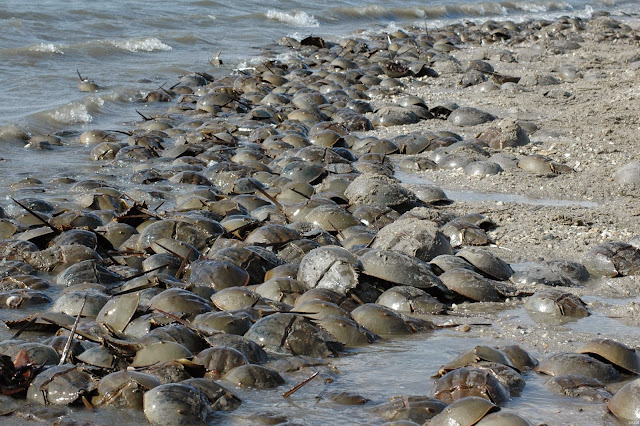 |
| Horseshoe Crabs at Delaware Bay Photo: Greg Breese/ U.S. Fish and Wildlife Service |
The recent Full Moon for May is a reminder to me that the time is here for horseshoe crabs (Limulus polyphemus) during the high tides of the new and full moons of early spring.
The ancient horseshoe crab evolved during the Paleozoic Era (540-248 million years ago) and although we call it a "crab," it is a species more closely related to spiders and scorpions.
The female horseshoe crabs will emerge from their muddy beds this month for spawning and will dig several nests to lay their eggs.
The males, one-third the size of females, attach themselves to the rear of the female's carapace and are pulled over the nests to fertilize the eggs.
Horseshoe crabs "protect" their eggs by covering their nests with sand, but wind and waves and especially visiting migratory shorebirds take many of those eggs. Shorebirds stopping in Delaware Bay on their travel along the Atlantic coastline. Shorebirds almost double their weight from feeding on horseshoe crab eggs which gives them the energy source that enables them to continue their migration north.
 |
| Red Knots at Delaware Bay Photo: Greg Breese/ U.S. Fish and Wildlife Service |
Horseshoe crabs will molt several times before they reach sexual maturity at between 9 and 11 years of age.
Horseshoe crabs are harvested commercially primarily as bait to catch whelk (conch), American eel, and sometimes catfish. Pharmaceutical companies extract their blue, copper-based blood which contains a chemical substance, hemocyanin, which clots when exposed to bacteria. The blood is used to test drugs and medical equipment for the presence of harmful bacteria.
Sources: www.fws.gov/northeast/marylandfisheries/
No comments:
Post a Comment